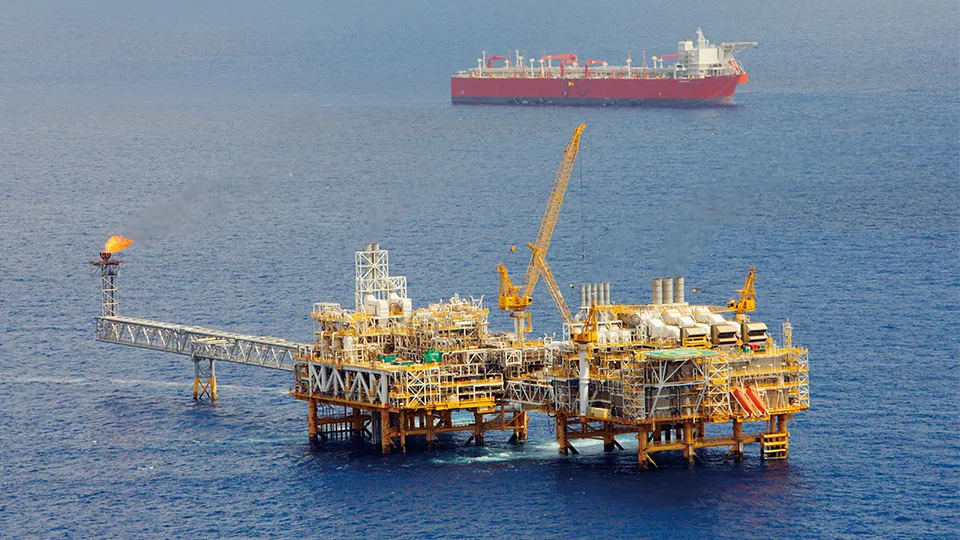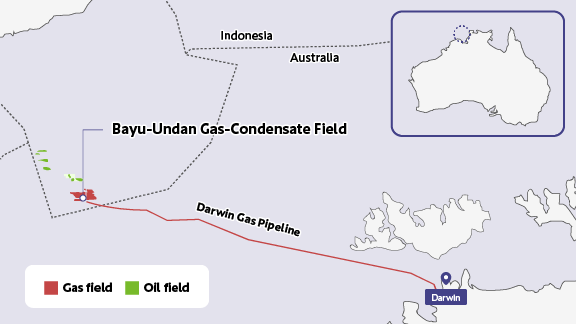
| Contract area (block) | Project status | Production volume | Venture company (established) | Interest owned (*Operator) | Contract type |
|---|---|---|---|---|---|
| Bayu-Undan Unit | In well abandonment process | - | INPEX Sahul, Ltd. (Mar. 30, 1993) |
|
Abandonment Agreement |
Project History
| 1993 | INPEX acquires participating interest in contract area |
|---|---|
| February 2004 | Commences sales of condensate and LPG |
| February 2006 | Commences LNG shipments |
| August 2019 | INPEX enters into a new PSC with the government of Timor-Leste following the delimitation of maritime boundaries between Australia and Timor-Leste. The project continues to be operated under terms equivalent to the previous arrangements |
| March 2022 | JVPs commence FEED for Bayu-Undan CCS to capture and store CO2 emissions by utilizing the Bayu-Undan and Darwin LNG facilities |
| November 2023 | Last LNG cargo lifted from Bayu-Undan Gas supply commences via pipeline to domestic gas markets through Darwin |
| June 2025 | Production ends Production sharing agreement expires and transitions to abandonment agreement *FEED work continues at Bayu-Undan CCS |
In 1993, INPEX acquired a participating interest in the former JPDA03-12 contract area, which was jointly managed by Australia and East Timor. Exploration within this contract area resulted in the discovery of oil and gas fields. Studies revealed the Undan and Bayu structures, located in the adjacent former JPDA03-13 contract area, to be a single structure. In 1999, the interest holders unitized both contract areas into the Bayu-Undan Gas-Condensate Field. As a result of the ratification of a maritime boundary treaty between Australia and East Timor, a new production sharing contract (PSCTL-SO-T 19-12) was agreed with East Timor in 2019.
We have produced and shipped condensate, LPG and LNG, and supplied gas to domestic customers in Australia from the Bayu-Undan Gas Condensate Field. However, production was terminated on June 4, 2025. Currently, as part of our climate change response, we are considering a CCS (Carbon Capture and Storage) project. This project would involve the reutilization of the existing production facilities and the Darwin LNG plant to capture CO₂ emitted from surrounding oil and gas fields, and inject and store it underground.
